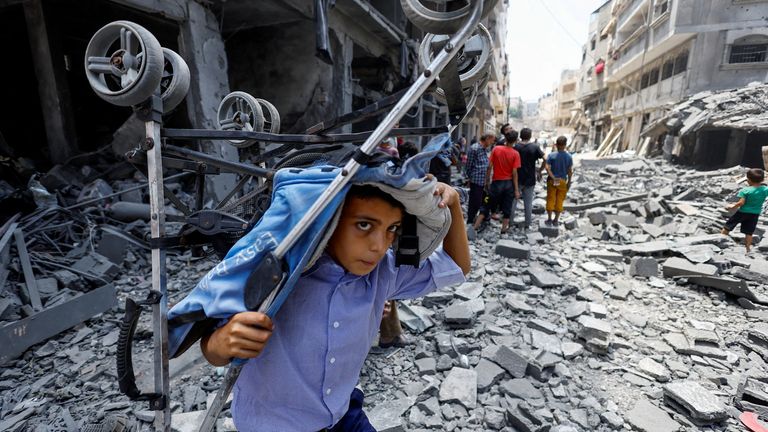Israel’s Gaza Reoccupation Plan Faces Military Pushback, Regional Risks, and Mounting Domestic Strain
This report draws on an analysis by Dr. Hatem Sadek, published by the Daily News Egypt, which outlines the military, political, and regional stakes surrounding the move and the alternatives under discussion.
Sadek notes that the 2005 withdrawal, led by then-Prime Minister Ariel Sharon, removed Israeli troops and 9,000 settlers from 25 Gaza settlements while effectively sealing the Strip under a blockade. Today, 75% of Gaza is already under Israeli control. Yet, a full reoccupation is opposed by top commanders who view it as operationally exhausting and dangerous—particularly for the 50 hostages believed to remain alive out of the 251 abducted on October 7. Chief of Staff Eyal Zamir has reportedly urged a hybrid approach: fortify existing positions west of a buffer zone now being cleared of tunnels and Hamas infrastructure, and conduct targeted strikes to degrade Hamas capabilities rather than attempting to seize every district.
According to Sadek, Zamir warned that reoccupation would erode regular and reserve forces, overextend armored units, and could take years to secure urban strongholds such as Gaza City and central refugee camps—raising casualties, costs, and international censure as accusations of genocide intensify. He also cautioned that a renewed push could prompt Hamas to execute remaining hostages, recommending the removal of “hostage recovery” from formal war aims to avoid triggering retaliatory killings.
The domestic burden looms large. Reoccupation could require mobilizing 250,000 reservists, adding social and economic strain to a military already entering its third year of sustained operations on multiple fronts. Citing the Israeli daily Maariv, Sadek says the psychological toll is rising, with increasing reports of soldier suicides amid stalled objectives—neither a decisive defeat of Hamas nor a comprehensive hostage deal.
The humanitarian implications are equally daunting. Any long-term presence would carry responsibility for supplying more than two million displaced and jobless Gazans, a task the Israel Defense Forces are ill-equipped to handle, according to Sadek. Meanwhile, Israel’s political-military rift has widened: generals accuse Netanyahu of holding back decisive operations in anticipation of a prisoner exchange, while the prime minister faults the army for failing to prevent the October 7 assault or dismantle Hamas afterward. The opposition is pressing to capitalize on the crisis, raising the prospect of early elections.
Regionally, Egypt has warned that reoccupation would threaten its national security and could jeopardize the 1979 Camp David treaty, viewing any new status quo in Gaza as unacceptable. In Lebanon, Hezbollah has signaled it could escalate rocket fire if Israel intensifies operations, potentially using a reoccupation as a pretext to re-enter the conflict. In Washington, President Biden publicly opposes reoccupation but continues providing arms and diplomatic cover; some policy circles favor a force-first approach before political reconstruction.
With global pushback mounting and domestic consensus fraying, Sadek argues that Netanyahu may ultimately be forced toward a single, sweeping deal: end the war and withdraw from most of Gaza in exchange for terms Hamas would accept. The unresolved question remains whether an exit strategy exists—and for whom.
Photo: The source
